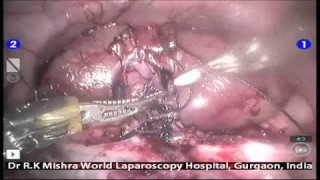Female Pelvic anatomy and Tubal Patency Test
Add to
Share
192 views
Report
1 month ago
Description
1. Introduction Understanding female pelvic anatomy is crucial for diagnosing and treating gynecological and fertility-related issues. One key aspect of female reproductive health is the assessment of the fallopian tubes’ patency, as blocked tubes are a common cause of infertility. Tubal patency tests are diagnostic procedures that help determine whether the fallopian tubes are open and functional. 2. Female Pelvic Anatomy Overview The female pelvis houses the reproductive organs, urinary bladder, rectum, and supporting structures. The main reproductive organs include: a. Uterus A hollow, muscular organ located in the midline of the pelvis. Functions: Menstruation, implantation of fertilized ovum, and pregnancy. Divided into the fundus, body, isthmus, and cervix. b. Fallopian Tubes (Oviducts) Paired structures extending from the uterus toward the ovaries. Key segments: Infundibulum (with fimbriae), ampulla, isthmus, and interstitial part. Function: Transport of the ovum from the ovary to the uterus; site of fertilization. c. Ovaries Almond-shaped glands located on either side of the uterus. Function: Production of ova (eggs) and hormones (estrogen and progesterone). d. Vagina Muscular canal extending from the cervix to the vulva. Functions: Sexual intercourse, menstrual flow, and childbirth. e. Supporting Structures Ligaments: Broad ligament, round ligament, ovarian ligament, and uterosacral ligament provide support to the uterus and ovaries. Pelvic Floor Muscles: Provide support to the pelvic organs and maintain continence. 3. Tubal Patency Tests Tubal patency tests are essential in infertility evaluation to ensure the fallopian tubes are not blocked. Several methods are used: a. Hysterosalpingography (HSG) Procedure: X-ray of the uterus and fallopian tubes after injection of a contrast dye. Advantages: Outpatient procedure, visualizes uterine cavity and tubes. Limitations: Radiation exposure, may cause discomfort or cramping. b. Sonohysterography with Saline or Contrast (Sonohysterography / Sonohysterogram) Procedure: Ultrasound examination after injecting saline or contrast through the uterus into the tubes. Advantages: No radiation, can be combined with ultrasound evaluation of uterus and ovaries. Limitations: May be less accurate in some cases. c. Hysterosalpingoscopy / Hysteroscopy with Chromopertubation Procedure: Laparoscopic visualization of the pelvic cavity with injection of colored dye (usually methylene blue) through the cervix to check for spillage from the tubes. Advantages: Gold standard for tubal evaluation; allows simultaneous treatment of pelvic pathology. Limitations: Invasive; requires anesthesia. d. HyCoSy (Hysterosalpingo-Contrast Sonography) Procedure: Ultrasound-based contrast imaging using microbubble contrast agents. Advantages: Minimally invasive, accurate, no radiation. Limitations: Requires experienced operator and specialized equipment. 4. Indications for Tubal Patency Testing Infertility (especially >12 months of trying to conceive) History of pelvic inflammatory disease (PID) Previous ectopic pregnancy Suspected endometriosis History of pelvic or abdominal surgery 5. Patient Preparation and Considerations Perform the test in the follicular phase of the menstrual cycle (after menstruation, before ovulation). Rule out pregnancy before the procedure. Inform the patient about possible discomfort, cramping, or mild spotting. Antibiotic prophylaxis may be considered in patients at high risk of infection. 6. Conclusion Knowledge of female pelvic anatomy is fundamental for understanding reproductive health and infertility evaluation. Tubal patency tests play a pivotal role in diagnosing tubal blockages, guiding fertility treatments, and improving chances of conception. Choosing the appropriate method depends on the clinical scenario, patient comfort, and availability of expertise.
Similar Videos






